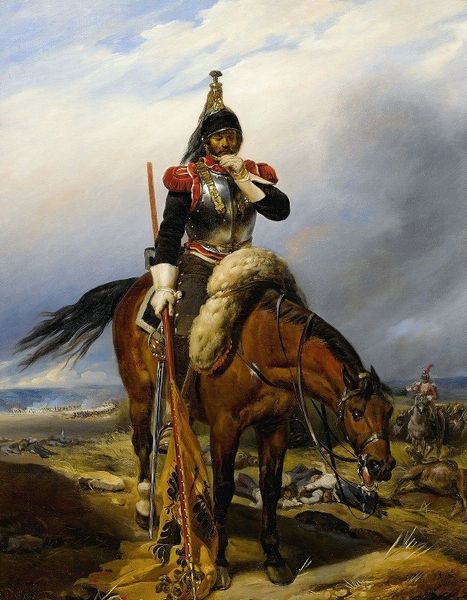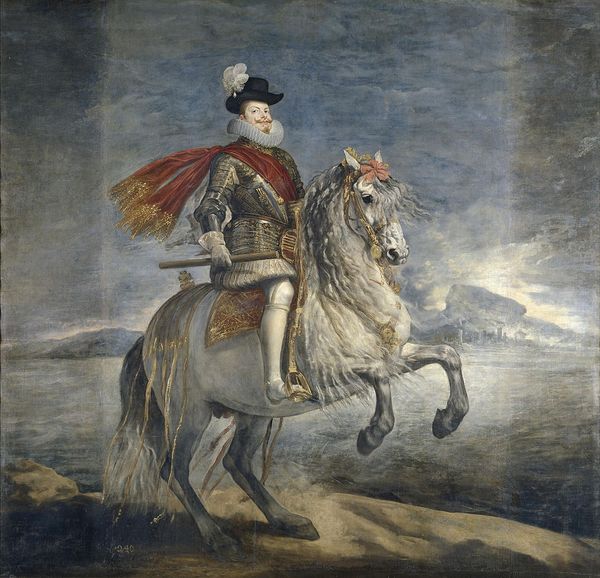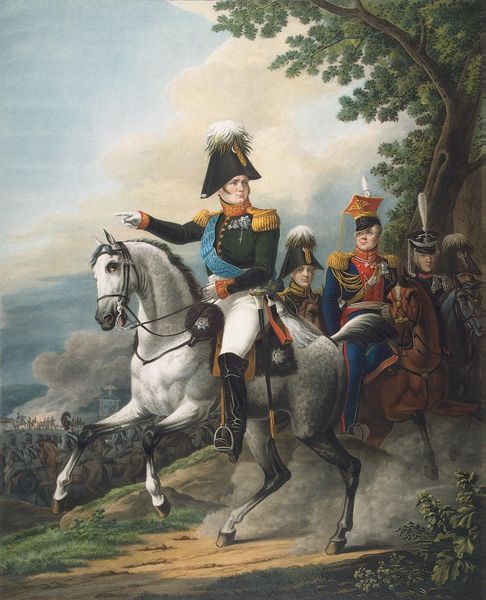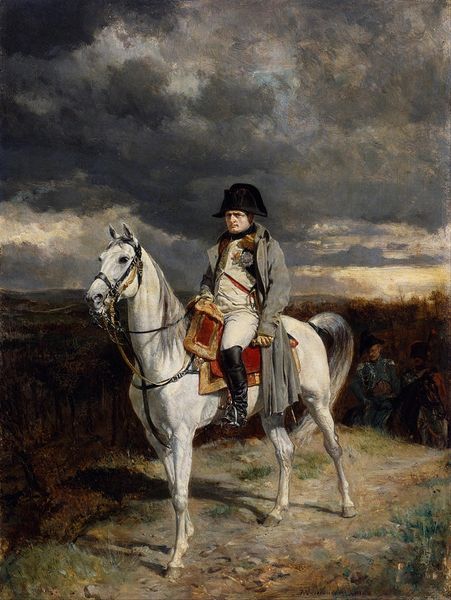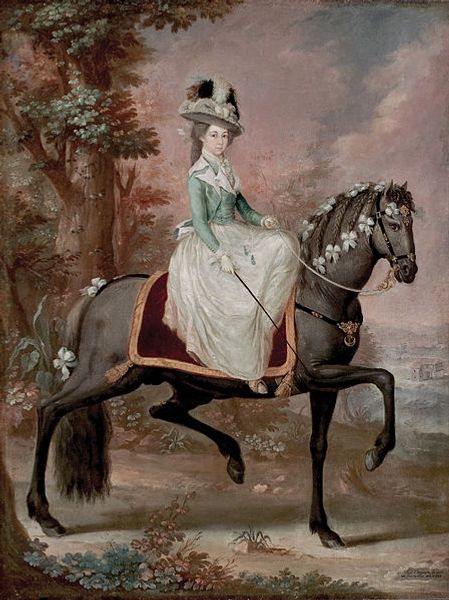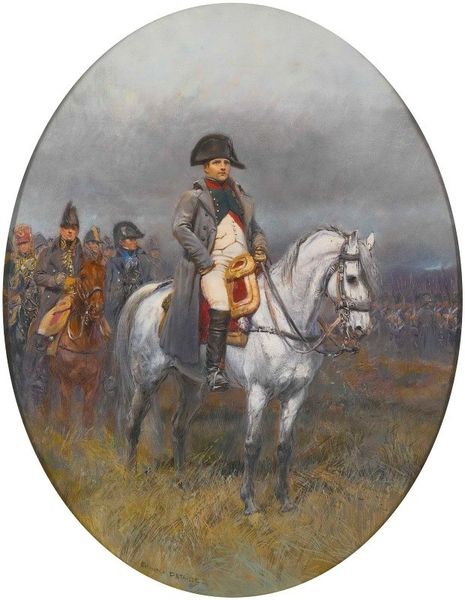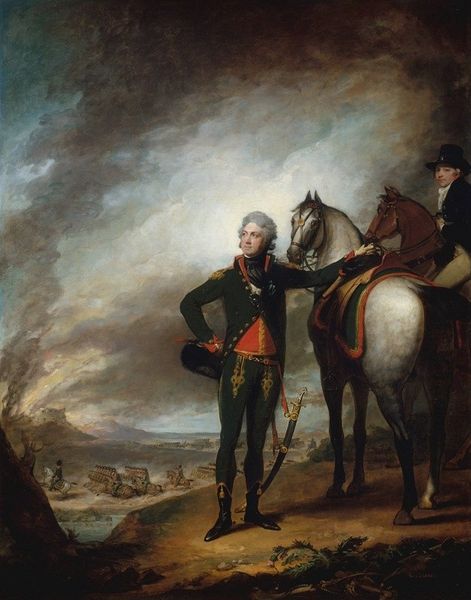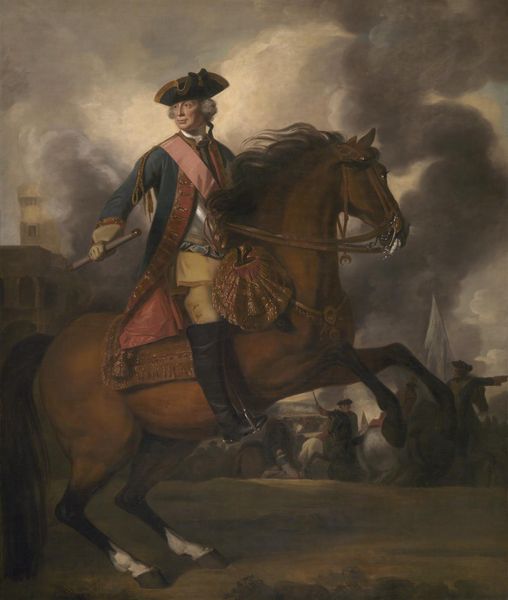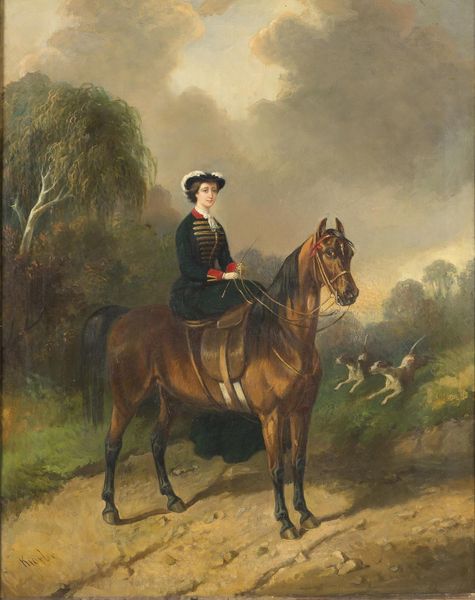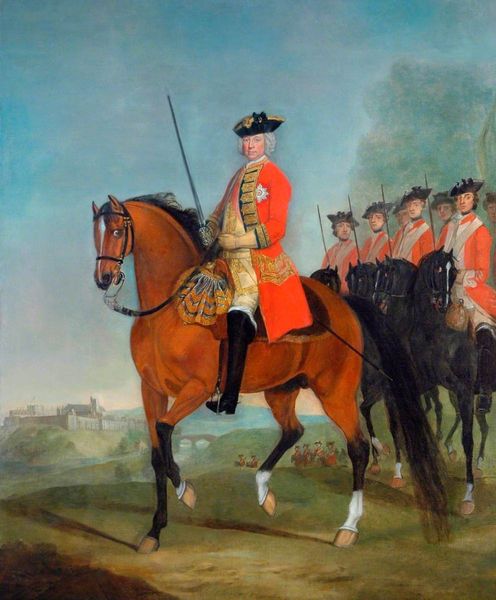
#
charcoal drawing
#
possibly oil pastel
#
oil painting
#
acrylic on canvas
#
underpainting
#
animal portrait
#
surrealism
#
animal drawing portrait
#
surrealist
#
digital portrait
Copyright: Public domain
Curator: Here we have George Dawe's "Portrait of Grand Duke Nicholas, Later Emperor Nicholas I," painted in 1822. It presents Nicholas on horseback. Quite a dramatic piece, wouldn't you say? Editor: Indeed. My first impression is the stark contrast between the regal figure and the turbulent sky; it's a composition full of unrest, an ominous and even dramatic piece with threatening overtones. Curator: Notice how Dawe utilizes light. It accentuates Nicholas’s face and uniform, emphasizing his commanding presence, while the background remains deliberately subdued, almost blurred, placing maximum visual weight upon Nicholas's countenance and military bearing. Editor: And the horse—such an important symbol! Horses, throughout history, embody power, virility, even nobility. This is magnified by his equestrian prowess, underscoring Nicholas’s inherent leadership as divinely ordained or inherent in his blood, a classical and almost predictable imperial trope. Curator: Precisely. Let us delve into the construction of the composition itself. The strong diagonal created by the horse’s pose injects dynamic energy and almost a degree of tension that is really intriguing when studied more closely. Also, notice the brushwork, Dawe’s expressive application that conveys the almost harsh environment. Editor: Look too at the colors. Dominated by earthy browns and somber blues, these reinforce themes of responsibility, severity, perhaps even hinting at the burdens and somber undertones intrinsic to leadership, given the weight and power inherent in its wielding. And the faintest glimpse of military personnel barely visible in the distant background! Curator: Yes! Barely visible figures behind hint to Nicholas' future reign as Emperor with an impending war following his assumption to the throne after a questionable right to the throne when his older brother stepped down. This creates an intricate interplay between duty and implied foreboding—an important premonition from our vantage point in history. Editor: Considering its cultural context adds richness. To interpret its visual symbolism allows an informed engagement that far transcends simple appreciation, with an echo effect spanning its historical importance to contemporary viewers today. I see it and can understand now some aspects that might have seemed irrelevant. Curator: A formal reading of Dawe’s choices coupled with its iconography and deeper meaning opens insightful pathways into the complex symbolism interwoven with both dynastic succession, and Russian ambition in that period, too. The whole work acts as one, conveying meaning from every aspect with historical context making its reading very interesting. Editor: I appreciate how exploring both the art's visual elements and embedded symbolism enriches the narrative, doesn’t it?
Comments
No comments
Be the first to comment and join the conversation on the ultimate creative platform.


